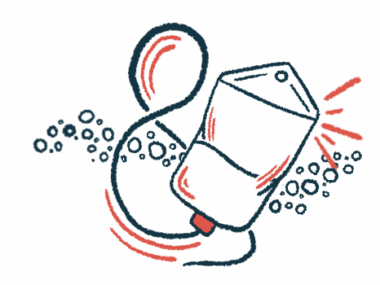aHUS and Diet: What Should I Eat and What Should I Avoid?
Written by |

Atypical hemolytic uremic syndrome (aHUS) is a rare disease in which blood clots are formed in the small blood vessels of the kidneys, leading to symptoms such as hemolytic anemia — destruction of red blood cells — thrombocytopenia, or a low platelet count, and kidney failure.
Although aHUS is a genetic disease, it is commonly triggered by various environmental factors — including eating certain foods. Foods also can cause flare-ups that can be either mild or severe.
Here are some pointers about food that you should keep in mind to help prevent or at least minimize aHUS flare-ups.
Avoid contaminated food
You should avoid contaminated food under all circumstances. Food and water contaminated with a type of bacteria called Shiga-toxin-producing E. coli can cause the acquired illness typical HUS. Symptoms of typical HUS are similar to those of aHUS and include hemolytic anemia, kidney failure, and long-term neurological complications.
Consider a low-salt diet
Maintaining proper kidney health is important for reducing the severity of complications in aHUS. Try reducing your total daily salt intake to 5 to 6 grams per day (about a teaspoon). It’s also important to keep yourself well-hydrated by drinking at least 1.5 to 2 liters of water daily.
Identify allergy-causing foods
While any food can potentially trigger an allergic reaction — and consequently an aHUS flare-up — certain foods are known to cause the majority of allergic reactions. These foods include milk and milk products, eggs, sesame seeds, soy, peanuts, tree nuts, wheat, fish, and shellfish. It is important to identify the types of food to which you might be allergic and make changes to your diet accordingly, as even a small quantity of these foods can cause an aHUS flare-up.
Identify proper substitutes for allergy-causing foods
To ensure good nutritional intake, it is important to find appropriate substitutes for foods to which you are allergic. You can create a “safe dish” by substituting good alternatives for allergy-causing ingredients. For example, cow milk may be substituted with rice milk or oat milk.
Consult a dietitian
Your doctor or a dietitian will be able to provide a personalized diet regimen keeping in mind your susceptibility to food triggers. Make sure you follow this diet plan strictly and get approvals from the dietitian before incorporating any changes to your diet.
Have epinephrine handy
Some foods can trigger a very severe allergic reaction known as anaphylaxis, which can be life-threatening. Epinephrine (adrenaline) provides a first-line treatment in the event of anaphylaxis. If you are susceptible to allergic reactions, it is advisable to have an epinephrine auto-injector handy.
Delayed administration of epinephrine in the event of anaphylaxis can result in the risk of hospitalization and other adverse effects, including death. Therefore, it is important that you and your family members familiarize yourselves with the operation of the epinephrine auto-injector so that it can be used immediately in case of an emergency.
Last updated: Nov. 6, 2019
***
AHUS News is strictly a news and information website about the disease. It does not provide medical advice, diagnosis, or treatment. This content is not intended to be a substitute for professional medical advice, diagnosis, or treatment. Always seek the advice of your physician or other qualified health provider with any questions you may have regarding a medical condition. Never disregard professional medical advice or delay in seeking it because of something you have read on this website.





